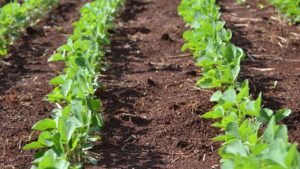Seed is not only the building block of agriculture, it’s a living organism. Weather, disease and other factors out of a seed company’s control greatly impact final yields, and can impact product availability.
With parts of the U.S. enduring drought conditions, others experiencing damaging windstorms, not to mention the overall challenges associated with growing a crop, seed production is always a gamble. However, unlike blackjack, seed companies can tilt the odds in their favor with careful planning.
2021 Season Snapshots
While there’s still much left to be determined about this year’s corn and soybean crops, seed companies are paying attention to what’s going on in the fields.
“Corn has moved past the critical detasseling and pollination stage,” says Daniel Olivier, North America commercial seed field production lead for Bayer in an email. “We have experienced some weather impacts in a few areas, but we expect our 2022 seed corn crop to be largely unaffected.”
Soybeans still have much of the yield potential left in the field. Timely rains will be critical to determine yield and seed size for the coming season.
“It is still early, but we’re estimating that we’re on target for our soybean production plans,” says Lisa Dotseth, Supply Chain Manager, Corteva Agriscience. “Quality remains our focus, and as of right now there are no major concerns. We continue to monitor environmental factors and the role they may play in maturity and yield potential.”
Looking back on this past year, some crops struggled to reach physiological maturity in the time frame companies estimated due to reduced sunlight from wildfire haze. Last year’s impact was isolated to the Pacific Northwest, but seed companies are taking note and speculating what they think this year’s haze could do to the growing crop.
READ: Canadian Seed Crop Sitting Tighter Due to Drought Conditions
“We hedge geographically to mitigate weather situations, so we’re never really concerned about not having seed,” says David Thompson, Stine Seed national marketing and sales director. “What we’ll see is pockets of bad weather that can cause shortages in certain hybrids or varieties, or the newest varieties running short their first couple years.
“We do need to get some halfway decent moisture to finish out this crop,” he continues. “If we get that, we’ll get that seed quality. If we get into fall and it’s really dry, soybean moisture will fall off the cliff and we don’t want to harvest really dry beans.”
September and October will start to paint the picture of what not only final seed yields, but quality look like for 2022. As always, Mother Nature is queen of the results.
Soybean Trait Mix Shifting
Soybean growers have more trait options than ever before, and they’re putting those options to work this season. This year’s options include: Enlist E3 Soybeans, LibertyLink, LLGT27, Roundup Ready 2 Xtend, Roundup Ready 2 XtendFlex and other non-herbicide focused traits such as Plenish high oleic soybeans.
With more options, farmers are spreading risk and diversifying their operations.
“In 2020, about 20% of the total U.S. soybean acres were planted to Enlist E3 soybeans,” says Cynthia Erickson, Vice President, U.S. Marketing, Corteva Agriscience. “In 2021, we were estimating 30% and it recently increased to 35%.”
Corteva is leaning hard into the Enlist E3 soybean technology. While they still sell Xtend traited soybeans through Pioneer and other brands, Enlist is where they’re staking their future. In fact, the company opted out of selling its dicamba premix, FeXapan, for 2021 and beyond.
Iowa-based Stine seed says 96% of their soybean sales for the 2021 crop were planted to the Enlist E3 Soybean trait. For the past several years, Xtend traited soybeans have been the dominating force.
“While we don’t have sales or yield numbers at this point of the season, we are seeing great demand for XtendFlex from our customers across all soy growing regions,” says Wes Hays, U.S. soybean portfolio lead for Bayer in an email. We have plans for HT4 soybeans later this decade, which will add tolerance to 2,4-D and HPPD to XtendFlex.”
In 2020, Reuters reported Xtend products were planted to 50 million acres, or 66% of the total crop. Enlist soybeans were just 20% of the 2020 crop.
“The U.S. industry jumped 15 percentage points [in total acres planted to Enlist E3 soybeans] from last year,” Erickson says. “We’re assuming much of that came from the Xtend system.”













